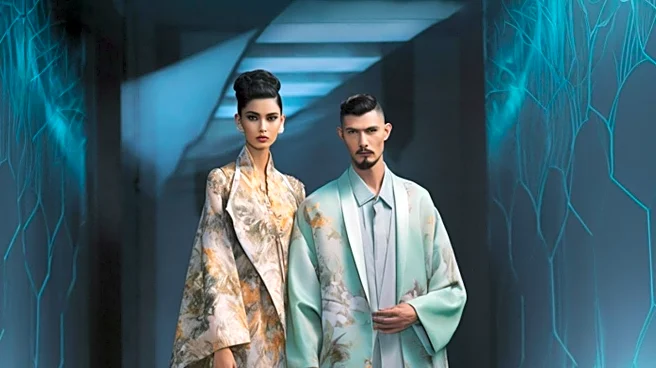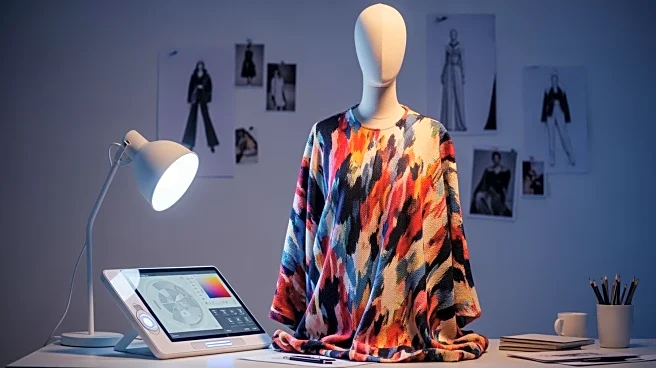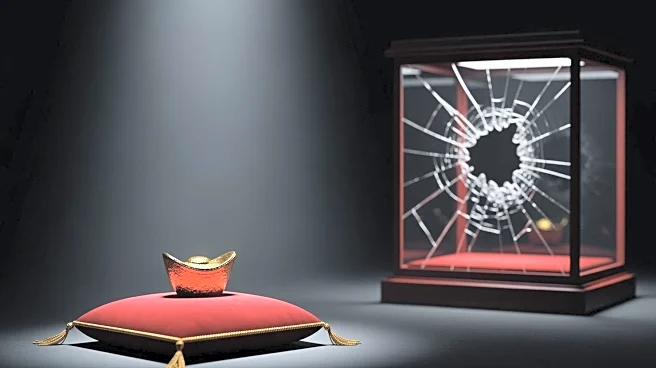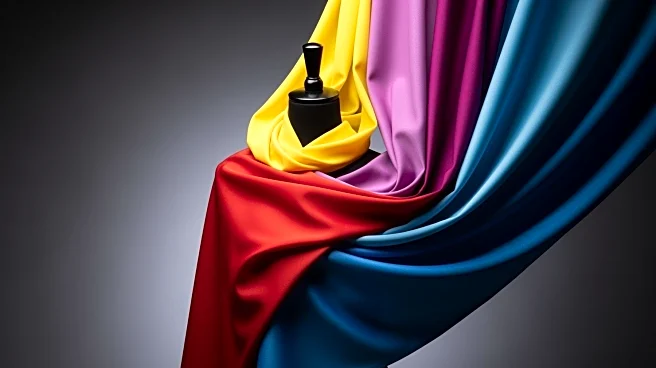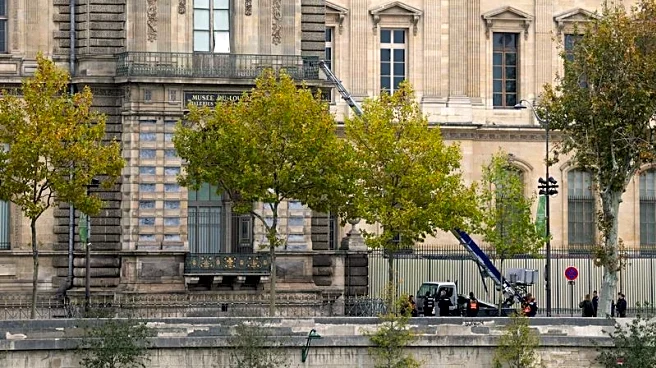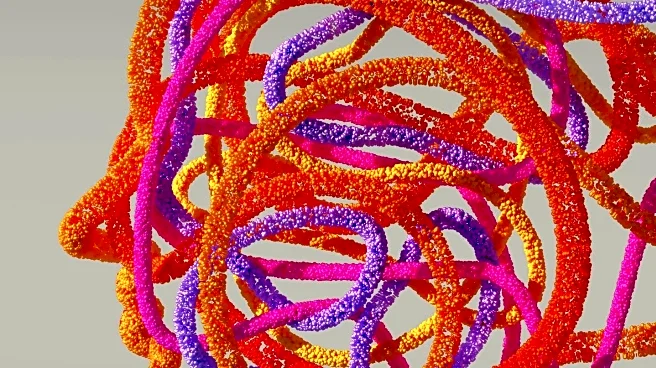What's Happening?
Shanghai Fashion Week SS26 showcased a blend of nostalgia, tradition, and modern aesthetics. Designers drew inspiration from the glamorous 1920s and deep-rooted Chinese aesthetics, incorporating elements
like red fabric bundles, mandarin collars, and frog fastenings. The shows emphasized ankle-length, flowing skirts and dresses, with designers like Rureminds pairing high-slit skirts with mesh tops and oversized jewelry, and Lacerta drawing from the Catalan lifestyle of Barcelona. Xuzhi's designs gained a nostalgic, romantic touch through references to Art Nouveau and boho-chic. The event also served as a business hub, with trade fairs and showrooms attracting increased visitors, reflecting a shift in consumer demand towards high-quality, versatile clothing.
Why It's Important?
Shanghai Fashion Week SS26 is significant as it highlights the evolving fashion landscape in China, where designers are increasingly blending traditional elements with contemporary styles. This trend reflects a broader cultural shift towards embracing heritage while innovating for modern tastes. The event also underscores the economic challenges faced by the fashion industry, with designers adapting to changing consumer preferences and leveraging digital marketing and e-commerce to sustain growth. The increased visitor numbers at trade fairs indicate a growing interest in high-quality, versatile fashion, suggesting potential shifts in global fashion trends.
What's Next?
The future of Shanghai Fashion Week may see further integration of traditional Chinese aesthetics with modern design, as designers continue to explore cultural heritage. The economic environment remains tense, but the fashion industry is likely to adapt by refining storytelling and visual identity to appeal to consumers. As consumer habits evolve, there may be increased demand for comfortable, versatile clothing, prompting designers to innovate in materials and design. The event's success could inspire other fashion weeks globally to incorporate cultural elements into their showcases.
Beyond the Headlines
The deeper implications of Shanghai Fashion Week SS26 include a potential shift in global fashion towards more culturally inclusive designs. The blending of traditional and modern elements may influence international designers to explore their own cultural heritage, leading to a more diverse fashion landscape. Additionally, the focus on high-quality, versatile clothing could drive sustainable fashion practices, as consumers seek garments that offer longevity and adaptability.
